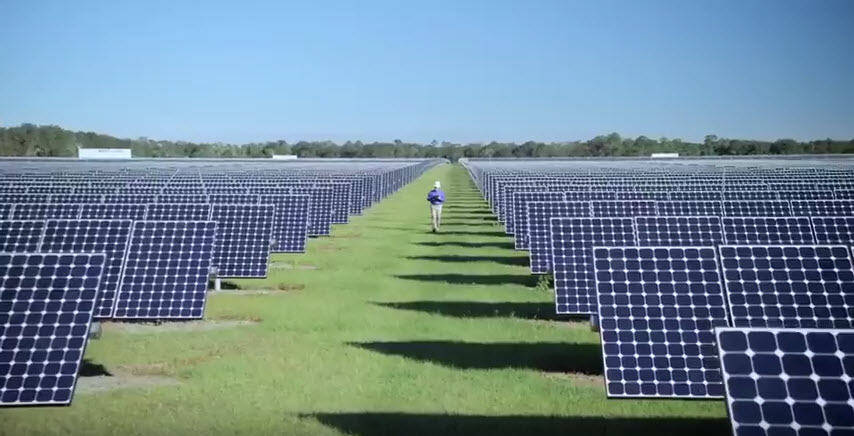“30 x 30″ is the ringing goal behind solar development in Florida, with Florida Power and Light (FPL) announcing earlier this year that campaign to install 30 million solar panels – somewhere between 10 and 13 GWdc, depending on the modules used – by 2030. Well, unlike the rest of us, FPL is acting on that New Year’s resolution, announcing plans to construct four solar projects across Florida this year, totaling 300 MW in total capacity.
The quartet of projects will each clock in at 74.5 MW and span from FPL Okeechobee and Hibiscus Solar Energy Center in Okeechobee and Palm Beach counties respectively, north to FPL Echo River Solar Energy Center in Suwannee County and west to FPL Southfork Solar Energy Center in Manatee County on the Gulf Coast. Oh and for anyone doing the math, these projects will, when completed, represent around 3% of the ’30 x 30” goal.
These four will also create an estimated 800 jobs, and are anticipated to be completed by the beginning of 2020.
What’s beautiful about these projects, the “30 x 30” plan and FPL’s solar development as a whole is that it’s not just solar as another arm of energy generation; instead these plants are replacing dirtier coal and oil-fired generation. FPL has been phasing-out oil-fired plants since 2001 and is expected to shut down its last remaining coal plant later this year. More development in solar only hastens the abandonment of these archaic energy sources.
It’s likely that these projects will follow FPL’s trend to rate base its self-built solar. Following the settlement of the company’s 2017 rate case, FPL was approved to practice its Solar Base Rate Adjustment which serves the upfront cost of the project’s development to the customer. This tactic has commonly been used during the construction of nuclear power plants and is a familiar face to Florida ratepayers.
More troubling, and not to beat a dead horse, but large utility-scale projects have become a common tool used by utilities to add renewables to their arsenal while still being actively working to quell the penetration of distributed solar, which they obviously do not profit off of and which further endangers their level of investment in transmission and distribution infrastructure, and thus their profit.
In any case, these projects will help The Sunshine State live up to its namesake. Florida fell from 3rd to 8th from 2017 to 2018 in terms of total installed capacity by state, though the “30 x 30” plan will help mitigate this fall. Over the next five years, due to the 5 GW anticipated under “30 x 30” and all additional development, SEIA expects Florida to add 5.5 GW in capacity, which is the second most optimistic prediction in the nation across that timeline.
FPL has not stated if energy storage is planned along with these projects, but has previously pitched energy storage as a key component to the “30 x 30” plan.
This content is protected by copyright and may not be reused. If you want to cooperate with us and would like to reuse some of our content, please contact: editors@pv-magazine.com.









By submitting this form you agree to pv magazine using your data for the purposes of publishing your comment.
Your personal data will only be disclosed or otherwise transmitted to third parties for the purposes of spam filtering or if this is necessary for technical maintenance of the website. Any other transfer to third parties will not take place unless this is justified on the basis of applicable data protection regulations or if pv magazine is legally obliged to do so.
You may revoke this consent at any time with effect for the future, in which case your personal data will be deleted immediately. Otherwise, your data will be deleted if pv magazine has processed your request or the purpose of data storage is fulfilled.
Further information on data privacy can be found in our Data Protection Policy.